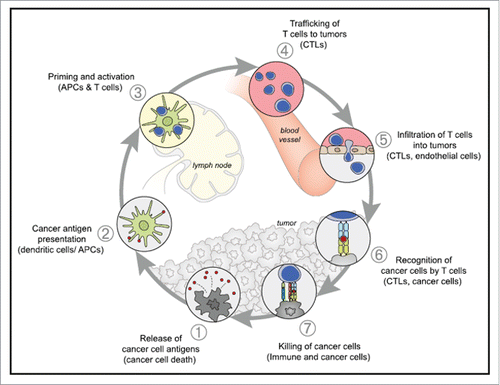Figures & data
Figure 1. The Cancer-Immunity Cycle The generation of immunity to cancer is a cyclic process that can be self propagating, leading to an accumulation of immune-stimulatory factors that in principle should amplify and broaden T cell responses. The cycle is also characterized by inhibitory factors that lead to immune regulatory feedback mechanisms, which can halt the development or limit the immunity. This cycle can be divided into seven major steps, starting with the release of antigens from the cancer cell and ending with the killing of cancer cells. Each step is described above, with the primary cell types involved and the anatomic location of the activity listed. Abbreviations are as follows: APCs, antigen presenting cells; CTLs, cytotoxic T lymphocytes. Reprinted with permission from ref. Citation9.

Table 1. A summary of multifunctional nanoparticles for cancer immunotherapy.
Figure 2. Schematic illustration of MPG-based nanovaccine (A), and The SEM micrograph of the spherical nanoparticles formed at N/P 10:1 at 20,000× magnification (B).

Figure 3. Schematic representation of the intelligent multifunctional nanoparticle targeted to tumor-associated macrophages (TAMs).

